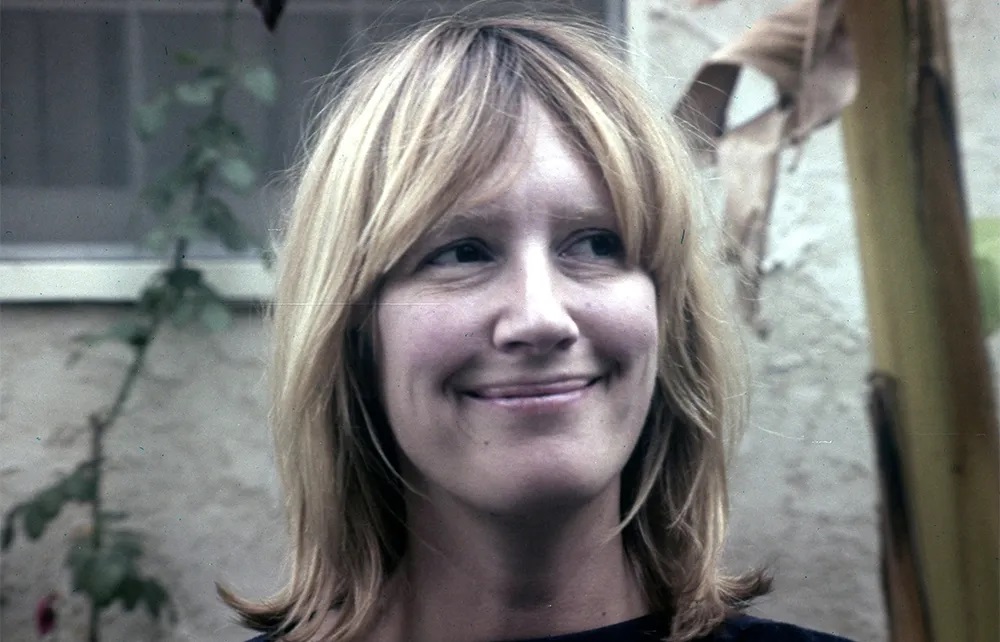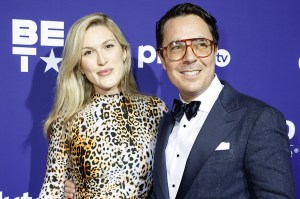Fresh out of Hollywood High, Eve Babitz introduced herself to Joseph Heller: “Dear Joseph Heller, I am a stacked eighteen-year-old blonde on Sunset Boulevard. I am also a writer.” It was 1960, and while her writing was the sheerest bliss, “Eve Bah-Bitz with the Great Big Tits,” as she was known, was herself a work of art. Beauty, she learned at school, was power and “the usual bastions of power are powerless when confronted by beauty.”
So it was her stack (36 DD) that opened doors for her until, in 1972, her friend Joan Didion told Rolling Stone magazine to publish Eve’s first story, “The Sheik.” That same year, Didion also got Eve’s art into Vogue. As a result, Eve was “fucked up in the extreme” about Joan. When, in 2016, Lili Anolik wrote about Didion’s L.A. years in Vanity Fair, Eve called her up: “Lili, you did it, you killed Joan Didion. I’m so happy somebody killed her at last and it didn’t have to be me.”
Everyone has heard of Joan Didion and few people of Eve Babitz, but when they became friends in 1967 it was Babitz with the big reputation. The daughter of a violinist and the goddaughter of Ivor Stravinsky, Eve was what Anolik describes in Didion & Babitz as “a low-high, profane-sublime bohemian-aristocrat by birth.” Didion’s husband, John Gregory Dunne, called Eve “the Dowager Groupie,” but she was, Anolik explains, a courtesan. She was also a painter, photographer and collagist who designed a classic album cover for Buffalo Springfield, slept with Jim Morrison before he was famous, went on diets with Linda Ronstadt, knew Harrison Ford when he was a bum, and got Carrie Fisher cast as Princess Leia in Star Wars.
In 1963, Eve was photographed naked by Julian Wasser, playing chess with a fully dressed Marcel Duchamp. This was her revenge on her boyfriend Walter Hopps, the curator of the Duchamp retrospective at the Pasadena Art Museum, for not inviting her to the private launch because his wife would also be there. “I thought it was maybe the best idea ever,” Eve said of the now iconic photograph. “Not only was it vengeance, it was art.” “I knew she’d blow Duchamp’s mind,” recalled Wasser, “and you know what? She did. She blew his mind!”
The Babitz breasts, spilling out of her bikini, appeared again on the cover of her first novel, Eve’s Hollywood (1974), in a photograph taken by Annie Liebovitz (another of Eve’s lovers). The blurb contained an observation by Earl McGrath, a friend of both Eve and Joan: “In every young man’s life there is an Eve Babitz. It is usually Eve.” The book, edited by Didion and Dunne, is dedicated to “the Didion-Dunnes for having to be who I’m not.”
The meaning of this message is the subject of Anolik’s red-hot and propulsive Didion & Babitz, a reappraisal composed of interviews, gossip and wisecracks which tries hard to be a joint biography but is really all about Eve. It is also about Eve and Lili, because it was Anolik who, in an article for Vanity Fair in 2014, brought Babitz back from the brink. Before Anolik found her in 2012 living in squalor and dying of Huntingdon’s disease, Babitz was L.A.’s best kept secret, the city’s genius loci. It is thanks to Anolik that Babitz’s seven books are now back in print, and following this one she will soon be more starry than Didion.
Eve’s Hollywood, which had mixed reviews and minimal sales, was followed by Babitz’s masterpiece Slow Days, Fast Company (1977), the slipshod Sex and Rage (1979), L.A. Woman (1982) and Black Swans (1993). Eve’s subject was herself and Los Angeles, the city at the center of the world. She hated New York and Europe, except for Rome, which reminded her of Hollywood, and she was appalled when Didion left for Malibu in 1971. “It takes a certain kind of innocence to like L.A.,” Babitz wrote in her essay “Daughters of the Wasteland.”
Saint Joan and saucy Eve, naked in the garden: they seem like polar opposites, and it’s impossible not to take sides. Each channelled the power of her body into her prose style. Babitz had big-bosomed, va-va-voom sentences which she described as “spurts,” while Didion, who never spurted anything, taught herself to write by typing out sentences from Hemingway. Eve was excess, Joan was reduction; Eve was flesh, Joan was bone. “Could you write what you write if you weren’t so tiny, Joan?” Eve asked her in a magnificent unsent letter:
Would you be allowed to if you weren’t so physically unthreatening? Would the balance of power between you and John have collapsed long ago if it weren’t that he regards you a lot of the time as a child so it’s all right that you’re famous? And you yourself keep making it more all right because you are always referring to your size.
One of these references is to a passage at the end of Didion’s Slouching Towards Bethlehem:
My only advantage as a reporter is that I am so physically small, so temperamentally unobtrusive and so neurotically inarticulate that people tend to forget that my presence runs counter to their best interests. And it always does.
Babitz is raw, Didion cooked; Babitz is blowsy, Didion precise; Babitz is life, Didion lifestyle; Babitz is amoral, Didion upright; Babitz is loose, Didion tight.
Saint Joan and saucy Eve in the garden: they seem like polar opposites and it’s impossible not to take sides
Didion was a “predator who passed herself off as prey,” says Anolik, while Babitz was prey passing as predator. Didion was deadly serious about her writing, while Babitz, who made a sign saying “I USED TO BE A PIECE OF ASS, NOW I’M AN ARTIST,” didn’t take seriously that women artists needed to be serious to be taken seriously. Didion looked like a child but acted like a grown-up; Babitz looked like a woman but acted like a schoolgirl. Didion ensured her own immortality, while Babitz invested in the death drive.
Had they been a married couple, they would be Marilyn Monroe and Arthur Miller. While Babitz was not wife material, Didion was so dependent on Dunne to edit, promote and protect her that they were “connected,” as Eve put it, “at the typewriter ribbon.” Their celebrated happiness was, however, fake. Dunne, Anolik reveals, was both violent and gay. Isherwood called them “Mrs. Misery and Mr. Know-All.”
Anolik is right to describe Babitz and Didion as “a single woman split in two.” While Eve is Joan’s ideal self, Joan, devoted to winning, needs someone to live the anarchic life she’s missing out on. They are also, Anolik says, the two halves of American womanhood, the superego and the id, Thanatos and Eros, yang and yin.
They had other things in common besides. Both were alcoholics, derailed by inherited illnesses. Didion’s weekly migraines, described in her essay “In Bed,” were passed down from her father and grandfather, as was the Huntington’s Chorea that Babitz died from in 2021, nine days before Didion’s own death. Didion held on for an extra week out of spite, tweeted the journalist Maris Kreizman, “so that she could officially outlive Eve Babitz.” Never putting a foot wrong, Didion, Anolik notes, was even good at death: “Merely to acknowledge her passing” on Twitter “was a sign of status.” It’s Eve, however, who gets the hagiography.
This article was originally published in The Spectator’s UK magazine. Subscribe to the World edition here.

























